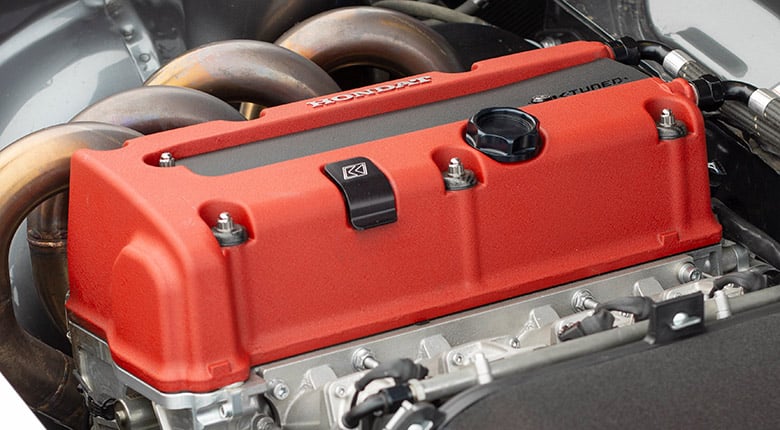In the engine swap world championships (if such a thing existed), there are arguably two motors that share the top step of the podium — General Motors’ LS, and Honda’s K-series. Both are legendary motors for good reason, but the four-cylinder, DOHC i-VTEC K series is especially close to our hearts.
In this article, you’ll learn everything you need to know about the smaller two-litre K20 version and all its various iterations. This is a motor often regarded as the best four-cylinder ever made, so let’s find out why.
In this article you’ll find:
- History of the Honda K20
- Why do people love the Honda K20?
- Where can you find the Honda K20?
- What’s the best Honda K20?
- Pros and cons of the Honda K20
- Tuning a Honda K20
- Reflashed Factory ECU or Aftermarket Standalone for a Honda K20?
- Honda K20 engine alternatives
- Getting the most from your Honda K20
A Brief History of Honda’s K20 Engine
At the turn of the millennium, Honda was on a high after an extremely successful decade in the 1990s saw the automaker’s small hatchbacks and coupes become massively popular, both in Japan and overseas markets. The most performance-orientated versions of these cars, namely the Civic, Integra, and CRX were powered by Honda’s trump card — the DOHC VTEC B series motors.
As the nineties drew to a close, Honda knew about the love that the enthusiast world had for the B16 and B18 motors, but also knew it had to evolve and introduce something even better to power its completely redesigned Civic and Integra going into the new millennium.
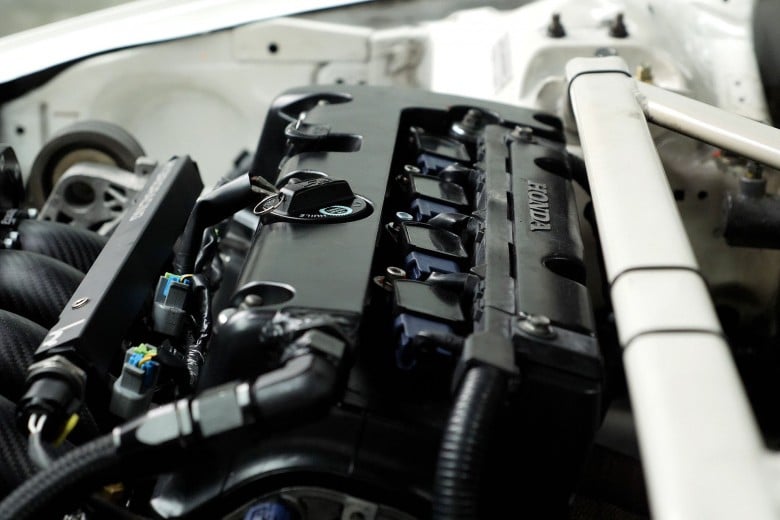
This resulted in the K20A, a clean-sheet design that took what made the B-series motors great, and improved it in all areas.
Initially, there were two versions available in the Japanese market — High Performance and Eco — with the latter having no oil squirters to keep pistons cool, lower compression, and VTEC only on the intake side. These motors powered all manner of more economy-focused Hondas of the era.
The high-performance version, on the other hand, was destined for something a little more special — the new EP3 Civic Type R and DC5 Integra Type R.
There was some trepidation from fans at first, but it quickly became apparent that this new 220+hp two-litre DOHC VTEC motor was everything a Honda enthusiast could want. It was relatively simple, massively strong, revved to the moon, and thanks to its bigger capacity and improved power delivery, provided an all-round better driving experience when compared to its B-series predecessor.
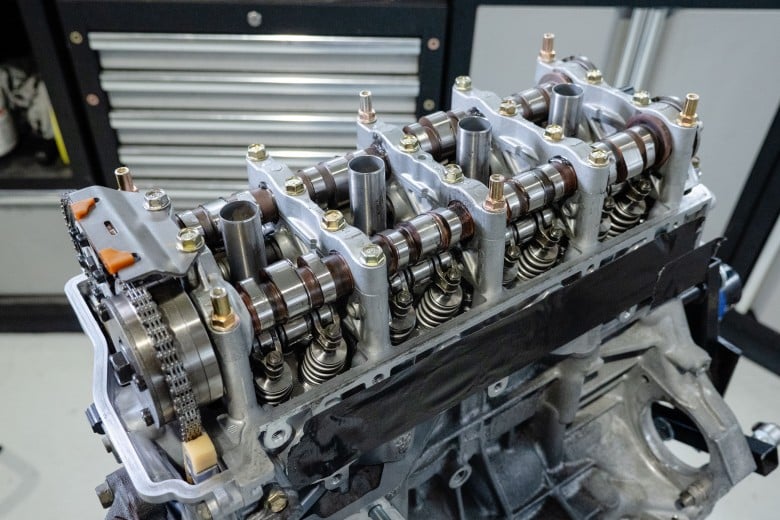
The new K20 was orientated differently with the intake at the front, and the exhaust at the rear — the opposite of the previous B-series. It used an all-aluminium construction with iron liners, a hand-balanced rotating assembly that includes a forged crankshaft, and aggressive camshafts actuating heavy-duty valve springs, all sitting in what is widely regarded as one of the best-flowing road-going heads ever made.
Since its inception, the K20 has seen dozens of different iterations as new use cases popped up, new technologies needed to be incorporated into the design, and expectations increased. The K20 is still being produced to this day in turbocharged direct injection form.
Even though enthusiasts appreciated the K20 in the early years after its release, it's doubtful that any of them would have expected this motor to become the icon it is today.
Along with GM’s LS, the K series (which includes the bigger K24) would likely be the most sought-after motor for engine swap projects in the world and is widely regarded as the greatest four-cylinder ever made to this day.
Why Do People Love The Honda K20?
In short, the K20A performs incredibly well for a naturally aspirated two-litre motor. It’s also strong, plentiful, reliable, and versatile.
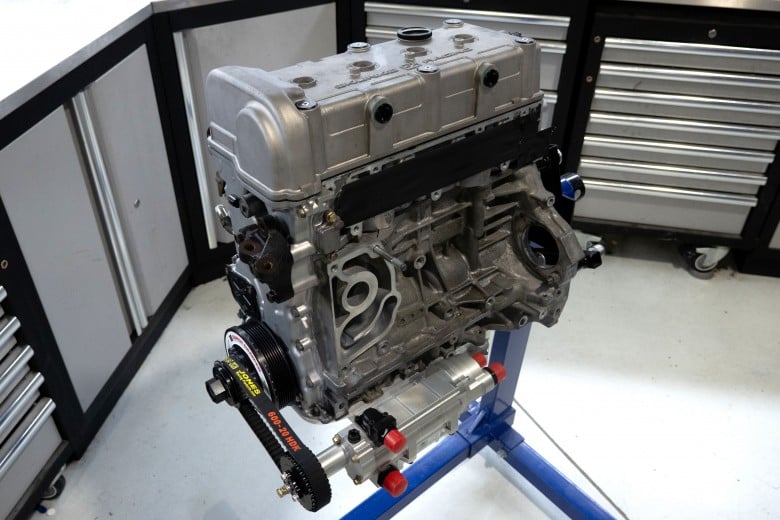
These motors can put up with a lot of abuse thanks to Honda’s overengineering — for example super strong iron cylinder liners, heavy-duty valve springs to handle big revs, a forged crank, and an interesting bed plate design that acts as a girdle and greatly increases strength and rigidity.
Honda’s i-VTEC system, first introduced on the K20A, is also an improvement on the much-loved VTEC system that dominated the 90s in the B and H series motors. i-VTEC one-ups its predecessor by adding an automatically self-adjusting cam gear on the intake side that continuously optimises cam timing across the entire rev range, not just at high RPM. This results in more low and mid-range torque.
Due to how many iterations Honda has produced over the years, these motors are plentiful, with tens of thousands of examples still roaming the streets or sitting at wreckers waiting for a new, more exciting life. This availability makes them reasonably affordable for the most part, putting the K20 firmly in the “no-brainer” category when shopping for a new motor for your project.
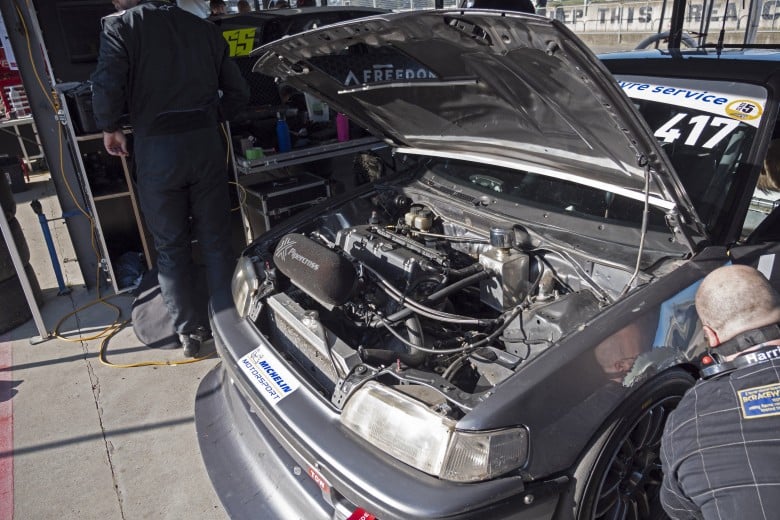
Another knock-on effect of this abundance is the absolutely massive level of aftermarket support that the K series motors enjoy. Everything is readily available for these motors, no matter what type of build you’re embarking on. This could mean anything from performance intake and exhaust systems all the way through to complete swap kits for a large range of vehicles.
As for the versatility of the K20, this is a motor that can fit 90% of your plans, and thanks to its small size (compared to an eight or six-cylinder, at least) it isn’t going to be too much of a hassle to fit in most chassis:
- It can be kept completely stock and thrown into a vintage chassis as the perfect high-revving, modern replacement for the original wheezy motor.
- It can be modified and turned into an even high(er) RPM naturally aspirated screamer pushing anywhere up to 300hp at the wheels, all motor.
- You can keep it stock internally and throw a turbo on the side, making up to a safe 400hp at the wheels without cracking open the engine — replace the pistons and rods, and you’re good for 700hp.
- Or, if you want to go crazy, there’s a huge array of aftermarket parts that’ll easily see this motor breaking 1000hp at the wheels.
- The K20 head mates right up to the bigger K24 block, meaning even higher horsepower and torque hybrid builds are common.
Where Can You Find Honda K20 Engines?
In this list, we’ll stick to the high-performance variants of the K20, as there’s a long list of vehicles that run the economy versions of these motors, designated the K20A, K20A1, K20A3, K20A4, K20A6, K20A7, K20A9, and K20Z2.
It’s also worth noting that a factory turbocharged version was used in various late-model Hondas, including all Type R Civics from 2015 to the present, in which it produced 306-320hp.
K20A
11.5:1 CR, 212-221 hp at 8000 rpm, 149-152 lb-ft at 6000 rpm, 8400-8600 rpm rev limit.
- 2001-2006 JDM Civic Type R (EP3)
- 2001-2006 JDM Integra Type R (DC5)
- 2002-2008 JDM Accord Euro R (CL7)
- 2007-2011 JDM Civic Type R (FD2)
K20A2
11:1 CR, 200 hp at 7400 rpm, 139-142 lb-ft at 6000 rpm, 8100-8250 rpm rev limit.
- 2001-2006 EDM Civic Type R (EP3)
- 2002-2004 AUDM/NZDM Integra Type R (DC5)
- 2002-2004 USDM Acura RSX Type S (DC5)
K20Z1
11:1 CR, 210 hp at 7800 rpm, 143 lb-ft at 6200 rpm, 8300 rpm rev limit.
- 2005-2006 USDM Acura RSX Type S (DC5)
- 2005-2006 AUDM/NZDM Integra Type R (DC5)
K20Z3
11:1 CR, 198 hp at 7800 rpm, 139 lb-ft at 6200 rpm, 8300 rpm rev limit.
- 2006-2010 USDM Civic Si (FG2, FA5)
- 2007-2010 CDM Acura CSX (FD5)
K20Z4
11:1 CR, 201 hp at 7800 rpm, 142 lb-ft at 6800 rpm, 8200 rpm rev limit.
- 2007-2010 EDM Civic Type R (FN2)
K20Z5
11:1 CR, 192 hp at 7800 rpm, 136 lb-ft at 6800 rpm, 8200 rpm rev limit.
- 2007-2010 Brazilian Civic Si (FA5)
What’s the Best K20 Motor?
With so many variants floating around, choosing exactly which K20 to install in your project car can be challenging — muddying the waters even further is that what’s “best” can sometimes be dependent on what you’re planning to do with it or its availability.
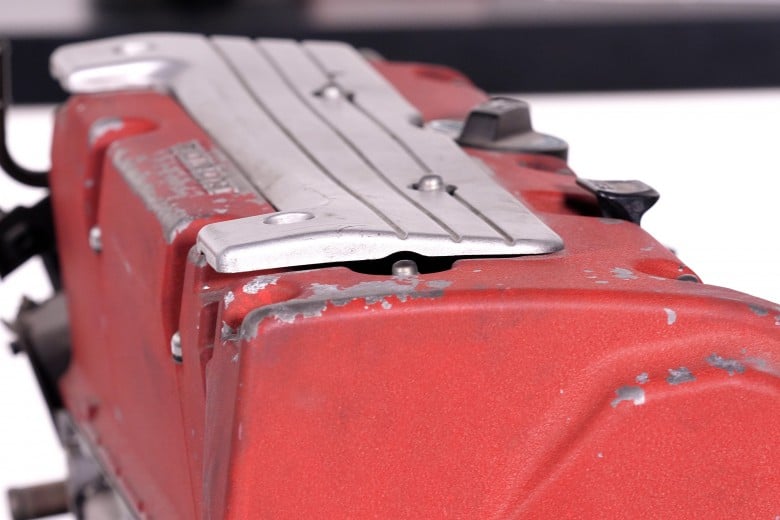
Let’s say you want to simply drop a motor in and keep it as Honda intended — untouched internally and naturally aspirated. In this case, the best option here is going to be the original high-performance K20A as found in the Japanese domestic market EP3 Civic Type R, DC5 Integra Type R, CL7 Accord Euro R, and FD2 Civic Type R. This motor has the most aggressive cams and rev limit, best-flowing head, and highest compression ratio.
Of course, all this isn’t to say that other options, like the K20A2 found in the 2001-2006 European Civic Type R (EP3), Australian/NZ DC5 Integra Type R, and DC5 Acura RSX Type S aren’t also excellent motors — they’re just slightly watered down when compared to the original JDM K20A. Nothing some modifications can’t rectify, in any case.
Lastly, the later K20Z1 found in the 2005-2006 USDM Acura RSX Type S and Australian/NZ market Integra Type R of the same years is also a weapon of a motor, however, it is a little more complex electronically, meaning there’ll be more work involved in a swap project.
If you’re planning to turbocharge and want to keep the motor internally stock, the K20A2 is going to be your best bet due to it having oil squirters like the K20A but a slightly lower compression ratio while still retaining an excellent head and cam profile.

If, on the other hand, you’re planning on building a motor, there’s absolutely nothing stopping you from picking up an economy-focused K20 for a few hundred dollars from a junkyard and building up something ultra-strong using aftermarket parts — just keep in mind that you’ll need to source a better-flowing head and oil pump from a high-performance version, and it won’t have oil squirters to help keep the pistons cool.
Known Weaknesses of the Honda K20 Engine
To be clear, Honda’s K20 series of engines is one of the most reliable high-performance motors ever produced, so nothing found in the following list of weaknesses should put you off. With that said, no engine is perfect, and there are some weak points that you need to be aware of:
- Narrow rod bearing journals can result in spun bearings in high RPM use cases
- Valve lash needs to be adjusted semi-frequently, and can be very noisy if they move outside of their tolerances
- Front crankshaft oil seal prone to minor leaks
- Idling or rough running problems are often caused by a failing idle control valve
- Factory engine mount degradation over time causes excessive vibration
- Exhaust cam lobe pitting can cause clattering noise and will need to be replaced if so
- Stock sump struggles to keep the engine lubricated on the track
Pros & Cons of the Honda K20 Engine
Pros
- Easy availability
- Massive aftermarket support
- Full swap kits available for many platforms
- Extremely robust
- Less low-down torque than the K24 can be advantageous in a street car — especially if it’s front-wheel drive
- High revs
- Honda’s i-VTEC system
Cons
- Less torque than its bigger K24 brethren can be a detriment depending on the application
- Open deck block
- Weak idler pulley
- Timing chain stretch
- Factory oil sump will need a baffle upgrade if sustained track use is on the cards
- Height may cause fitment problems in smaller vehicles
Tuning a Honda K20
Before discussing the tuning of a K20 motor, it’s important to understand that there will be plenty of examples online of these engines making absolutely astronomical power on stock internals, or only aftermarket rods and so on — just understand that these engines are the exception, not the rule.
For every 600hp internally stock K20 floating around online, there are a dozen more with a large hole in the side of the block.
As with any engine build, it's also important to remember that its longevity is only as good as its tune. If you don’t have a professional you trust, master the skills yourself and perform your own tuning work.
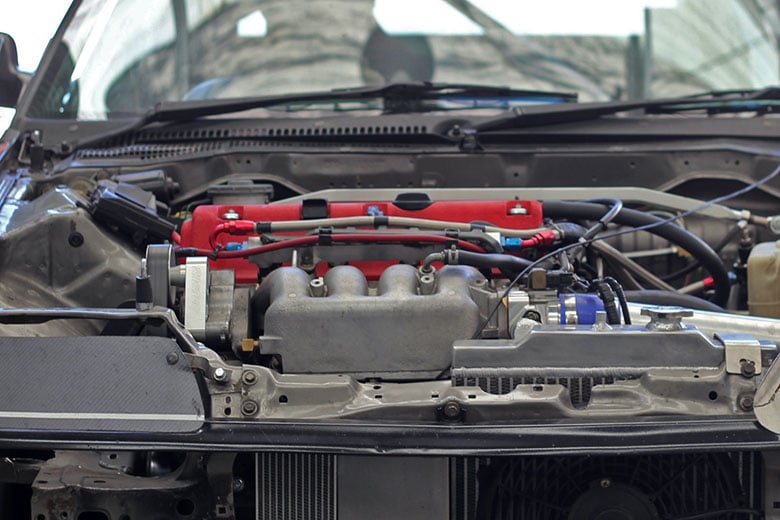
For basic bolt-ons, your best bang for buck is going to be the classic quality cold-air intake, aftermarket exhaust manifold and 3-inch exhaust, asd well as an ECU remap using something like Hondata’s popular K-Pro. These motors flow a lot of air, so although a 3-inch exhaust system sounds excessive, it’s necessary in order to extract the most power possible. This setup should see somewhere around 220hp at the wheels.
In regards to the intake plenum itself — whether this should be swapped out will depend on which exact version of the K20 you have, as they came with a few different plenums and not all were created equal. Briefly put, if you can source one, get your hands on a factory ‘RRC’ plenum, which can be found on the FD2 Civic Type R. Otherwise, there are plenty of good aftermarket options out there from companies like Skunk 2.
If you’re looking for a bigger hike in naturally-aspirated power, then more aggressive cams — which are going to require stiffer valve springs and retainers (if you’re going with double valve springs) — need to be fitted. While the cylinder heads on Type R K20s flow extremely well, there’s always room for improvement — a specialist will be able to improve the ports.
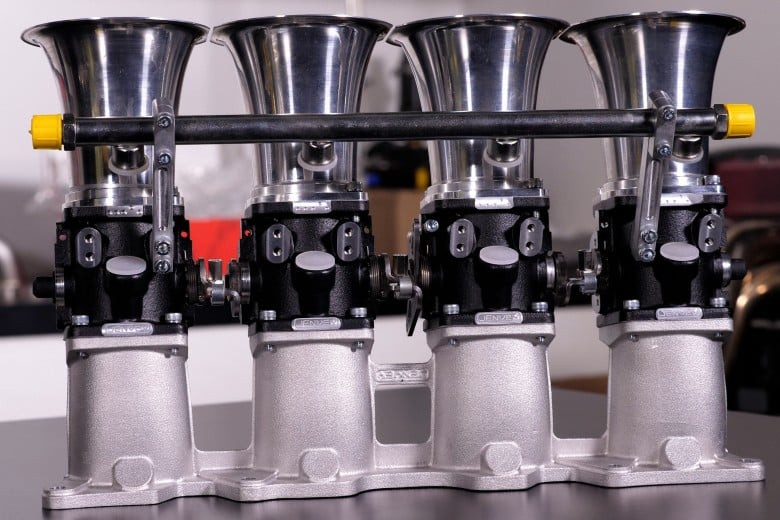
On the intake side, individual throttle bodies can be a great upgrade at this level, though it’s certainly not a case of just throwing on a set and seeing big gains — they require a fair amount of thought and matching to the engine build to see a worthwhile gain. Check out this article covering ITBs in detail for more information.
With the right array of pistons, rods, fuelling, and an aftermarket oil sump, you’ll be creeping towards a safe and useable 300hp at the wheels and a whole lot of RPM. 4 Piston’s K330 package is a good example of this.
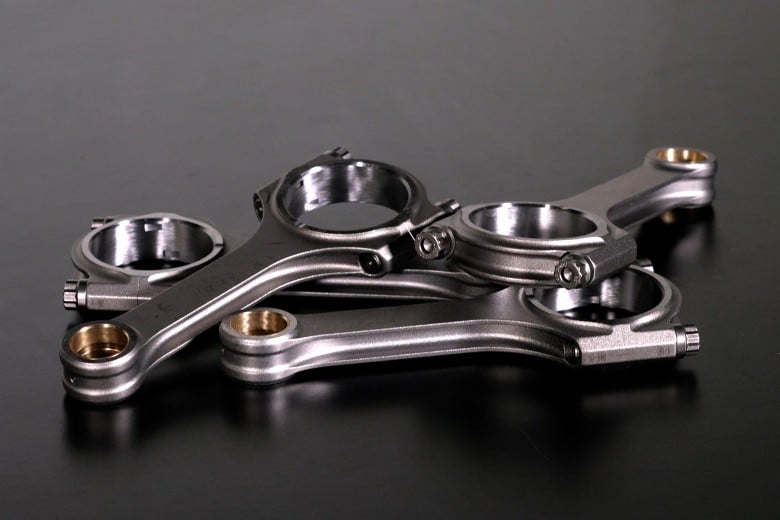
If a turbo is to be added, these motors can push around 400hp at the wheels internally stock without longevity problems, but anything above this will require aftermarket rods and pistons, as they simply weren’t specced by Honda to handle boost. Doing this should allow for up to 600-700hp at the wheels.
At around this power level, you’ll start to see issues with the K20s open deck block design, as it lacks strength and rigidity — to combat this you may want to look into block guards from companies like Supertech Performance.
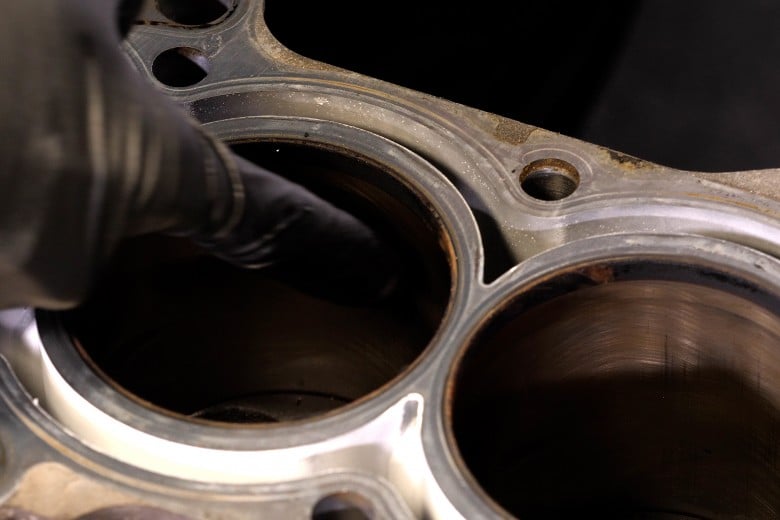
Next, while the factory iron cylinder sleeves are impressive, they were never meant to handle anything near 700hp, let alone above. Darton produces aftermarket sleeves that will solve this problem. It’s worth mentioning here that installation of these is absolutely critical to a successful build and we highly recommend using a machinist with CNC equipment and significant experience installing sleeves.
If you’re starting with an economy-focused K20 block, just be aware that it won’t have oil squirters for the pistons, and the oil pump won’t be up to the task — these will need to be addressed when building the motor. For the pump, the most common solution is swapping it out for a K20A or A2 version, or, if you’re looking for really high revs, an F20C pump from an S2000.
If you’re building a motor and looking for even more power and low-down torque, using a bigger K24 2400cc block with the K20A or A2 head is a popular option, as the increased capacity allows for a wider power and torque band, at the expense of higher revs.
Reflashed Factory ECU or Aftermarket Standalone for a Honda K20?
If you’re going all-out on a K20 build, you might be wondering at what point you’ll need to ditch the factory ECU and go standalone.
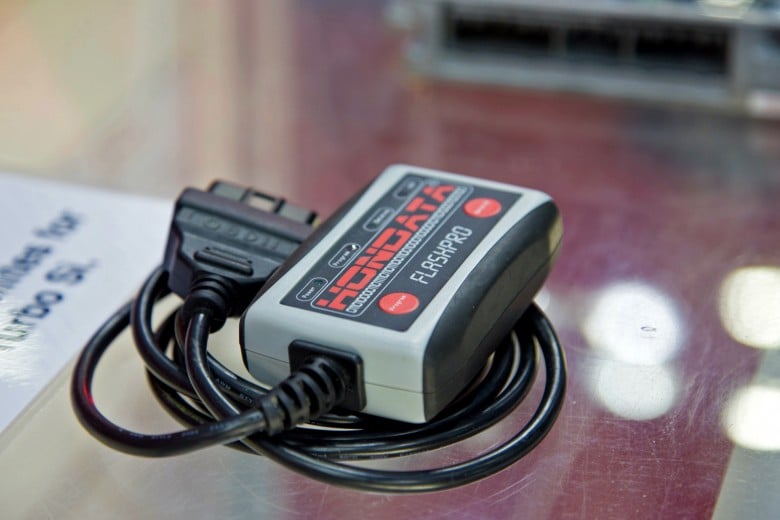
The truth is, if you want to stick with the stock ECU and reflash using something like Hondata’s K Pro package you absolutely can, no matter how much power you’re aiming for — it doesn’t even matter if the K20 is being transplanted into a different chassis — in most cases, a stock reflashed ECU is going to work just fine.
But… And you knew there was a but coming.
While reflash software like the K Pro is incredibly impressive and can do nearly everything you need it to (including data logging, flat shifting, launch control, boost control, flex fuel, and more), there’s no denying the fact that due to the way Honda’s tables work, actually working within the software to tune a K20 is clumsier and more complex than an aftermarket standalone.
Essentially, the more extreme you go with your build, the harder it's going to be to perfectly tune it on a reflashed stock ECU. Again, not impossible, just more challenging and complex.
So who should consider getting rid of the factory Honda ECU and going standalone on their Honda K20 build?
- If you’ve got a motor and no factory ECU to go with it, this could be a simple option that’ll make life easier in the future.
- If you’re building a serious race car, something more motorsport-orientated makes sense for both simplicity and future proofing — especially if you’re going to run a sequential gearbox like a Holinger, as flatshifting can be challenging to get right on a reflashed stock ECU.
- If you’re planning to run individual throttle bodies. Again, while it is possible to tune ITBs on a reflashed factory ECU, it’s not pretty and is much less of a headache on a standalone.
K20 Engine Alternatives
Depending on your particular use case, there are some decent alternatives out there if, for whatever reason, a Honda K20 isn’t going to work for your project:
- Honda K24 (2.4 litre NA four-cylinder)
- Nissan SR20VE (2.0 litre NA four-cylinder)
- Mitsubishi 4G63 (2.0 litre turbocharged four-cylinder)
- Ford Ecoboost 2.3 (2.3 litre turbocharged four-cylinder)
- Volkswagen EA888 (2.0 litre turbocharged four-cylinder)
- Toyota 3SGE Beams (2.0 litre NA four-cylinder)
Get the Most From Your Honda K20 Engine
It’s time to get serious about your K20-powered project. The question is, where should you start?
To set yourself up for good results, check out the range of engine building and tuning courses.
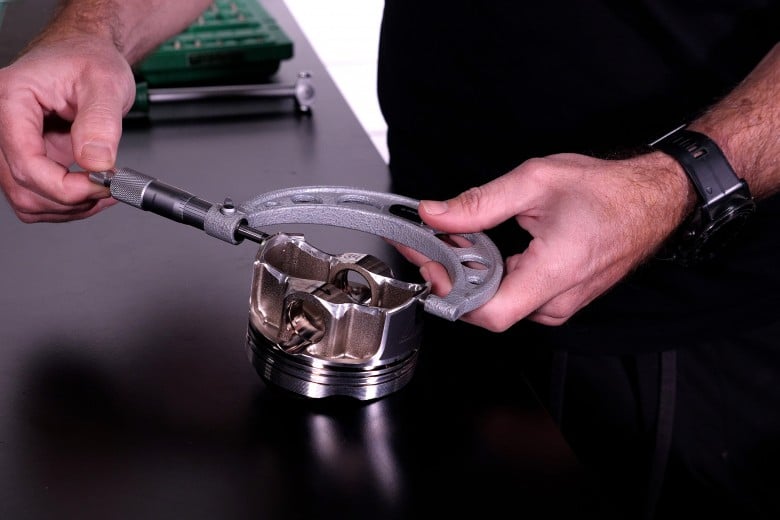
If you’re looking to build up a new K20 (whether it’s a rebuild using factory-spec parts or a fully-built motor) you’ll want to start with the Engine Building Fundamentals course, followed by Practical Engine Building, which is going to show you how to put everything you’ve learned into practice.
You can also grab the heavily discounted Engine Building Starter Package, which includes these two courses plus a course dedicated to degreeing cams.
Once you’ve built your K20, it’s time to tune it.

You can learn everything you need to know to successfully tune your motor with the EFI Fundamentals, Understanding AFR (air-fuel ratio), and Practical Standalone Tuning courses — these can all be bundled together for a healthy discount with the Tuning Starter Package.
Alternatively, if you’re looking to reflash the factory ECU instead of fitting a dedicated standalone, the Practical Reflashing course is going to be a must — especially considering it includes a full worked example tuning a K20A using Hondata’s K Pro software.
Lastly, it’s also worth looking into the Variable Cam Control Tuning course, which focuses on getting the most out of Honda’s iVTEC and similar systems.
Throughout this process, if you ever find yourself stuck, you’ll have access to our support forums, where you can post any questions you’ve got and get answers from tutors and the wider tuning community.
Honda’s K20 is arguably the greatest mass-produced four cylinder engine ever made, and although it’s very impressive stock, there’s a whole lot more performance on the table — you just need the knowledge and skills to extract it!
